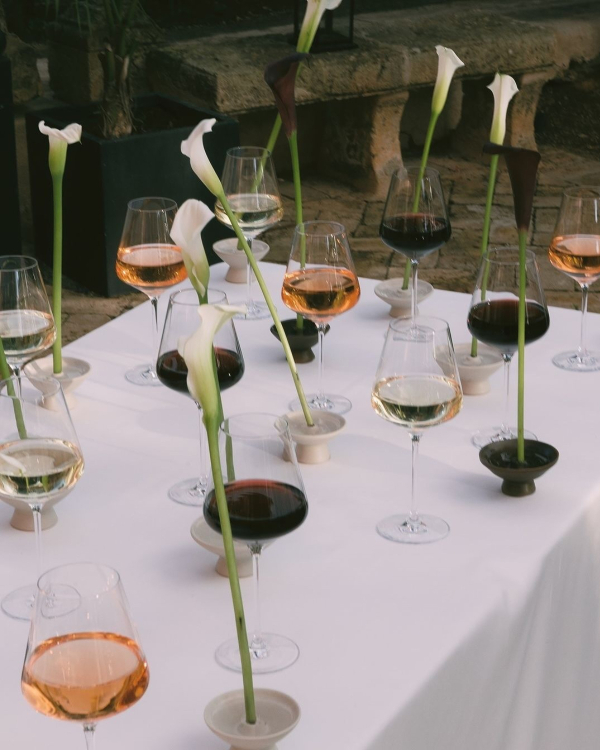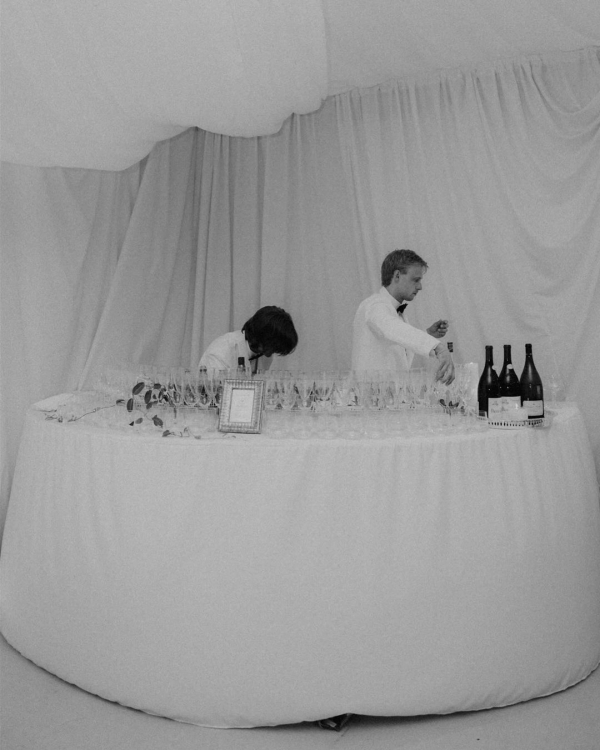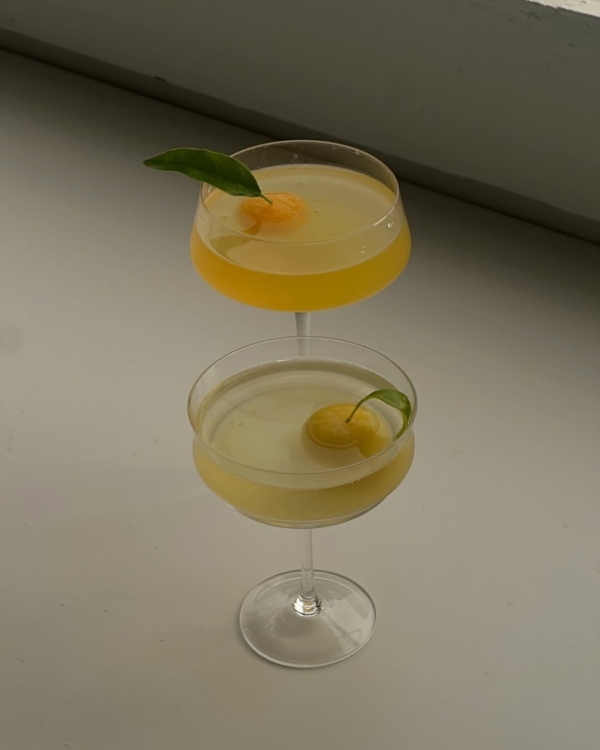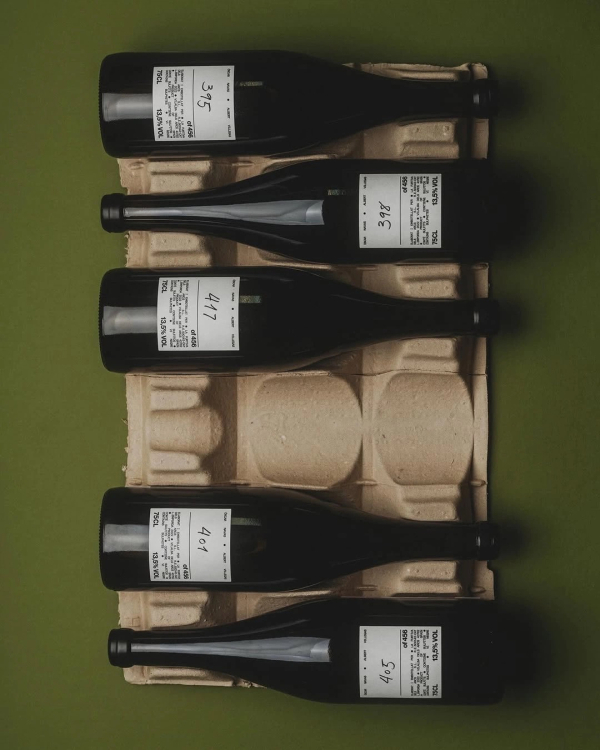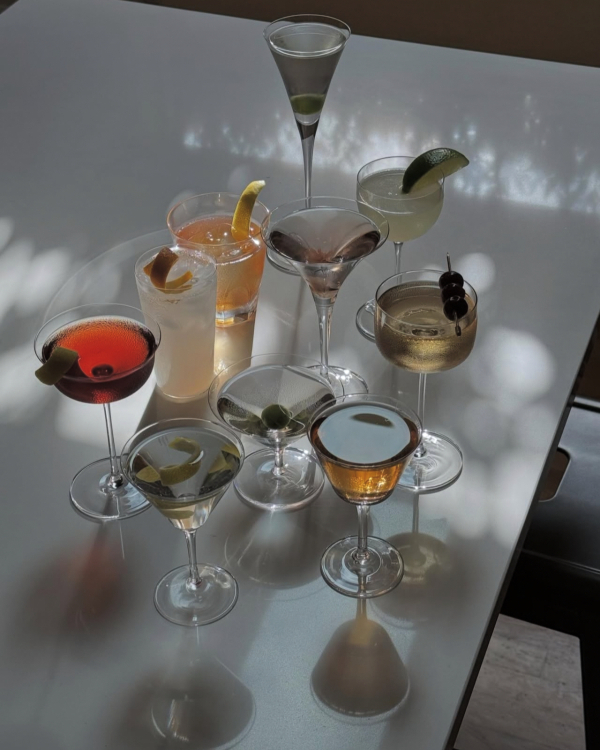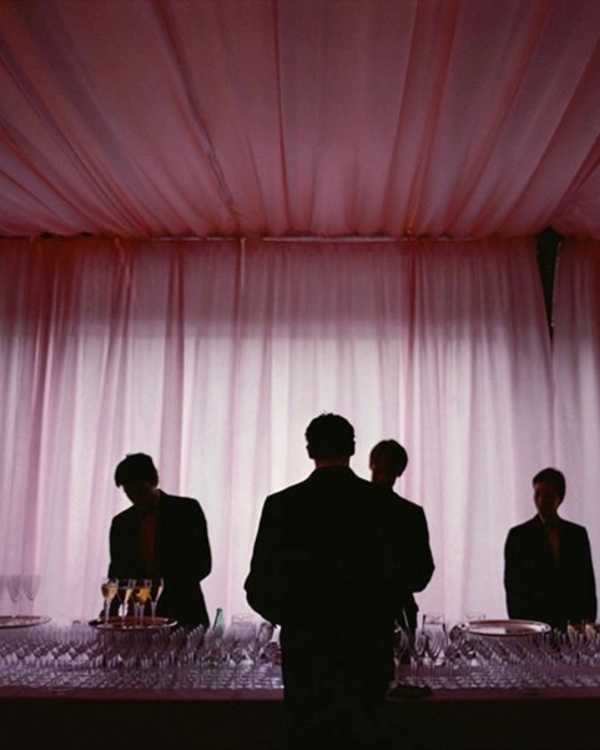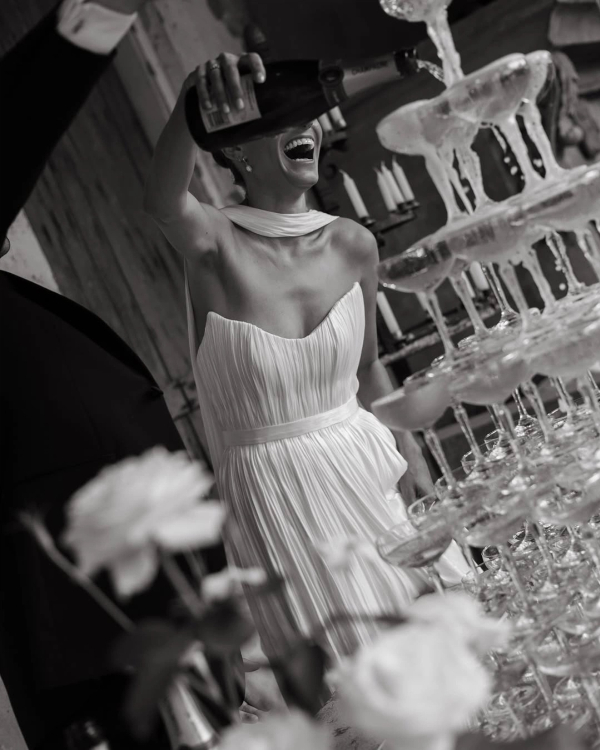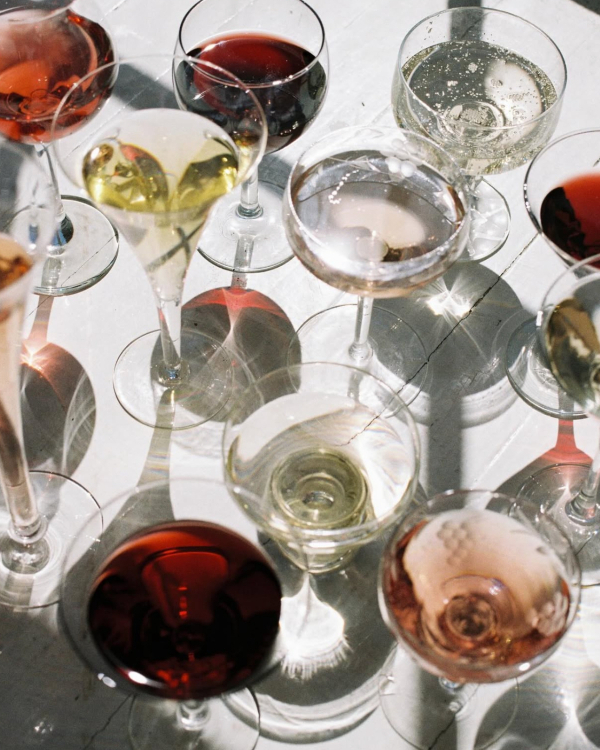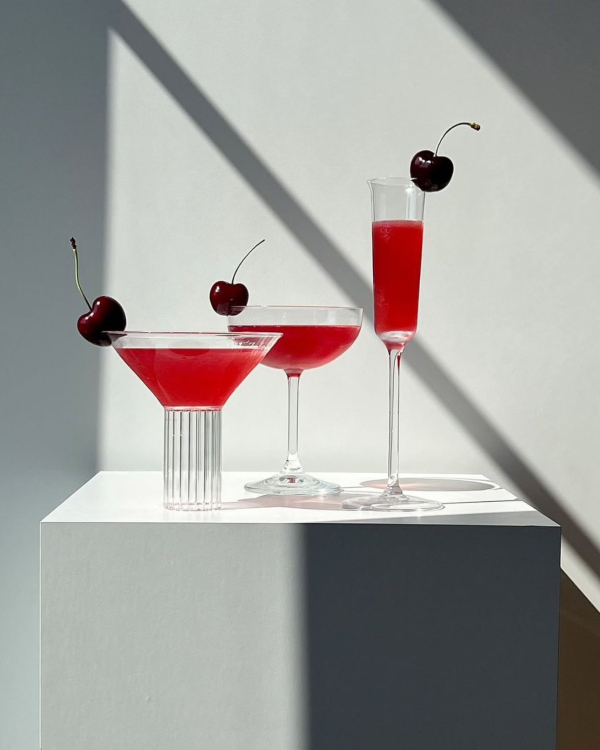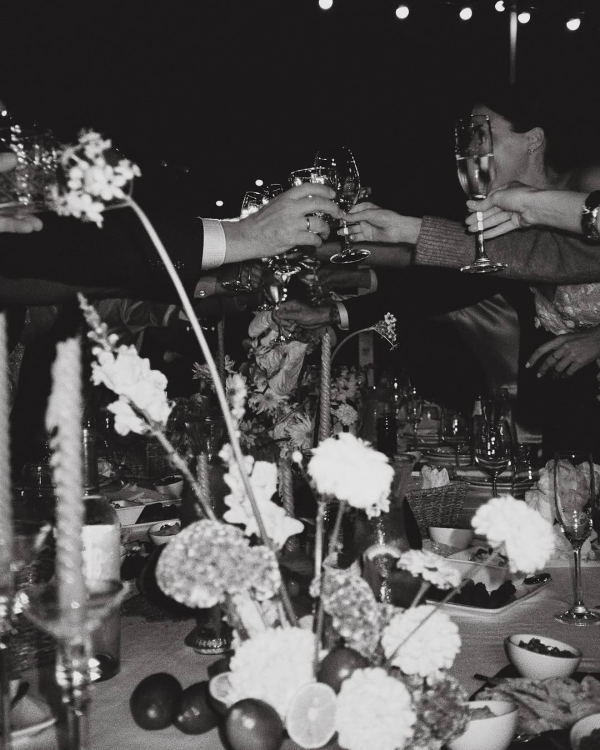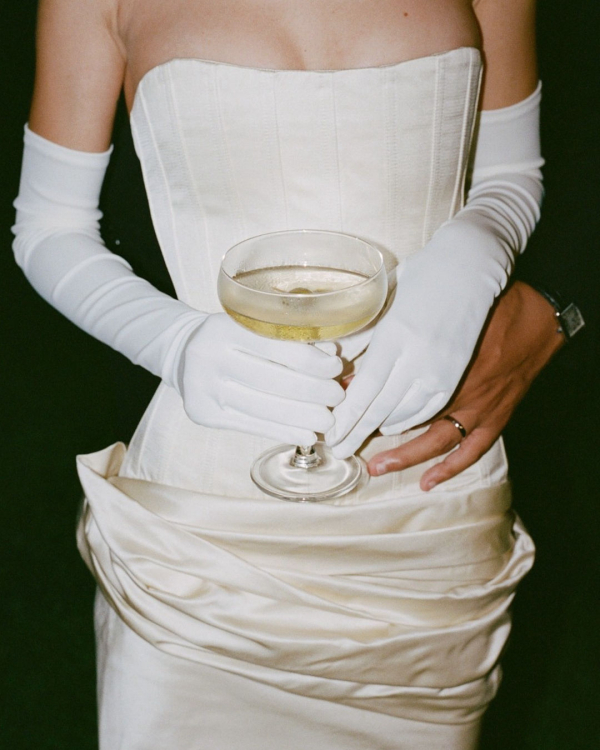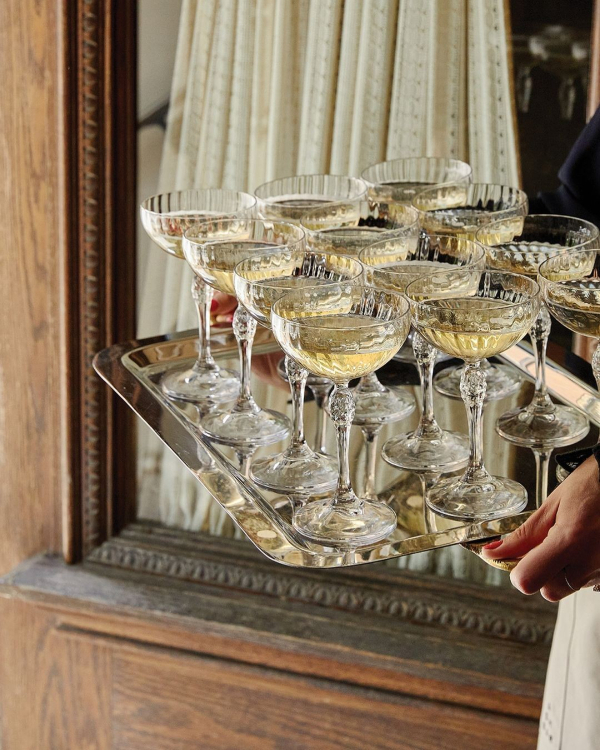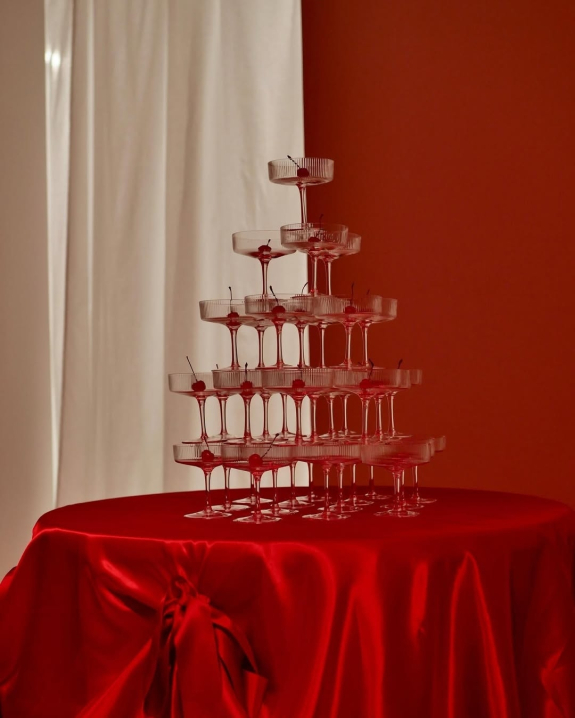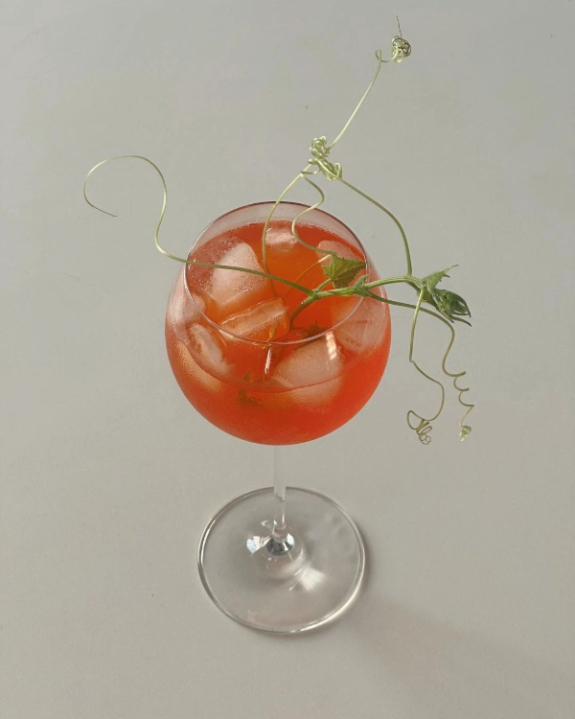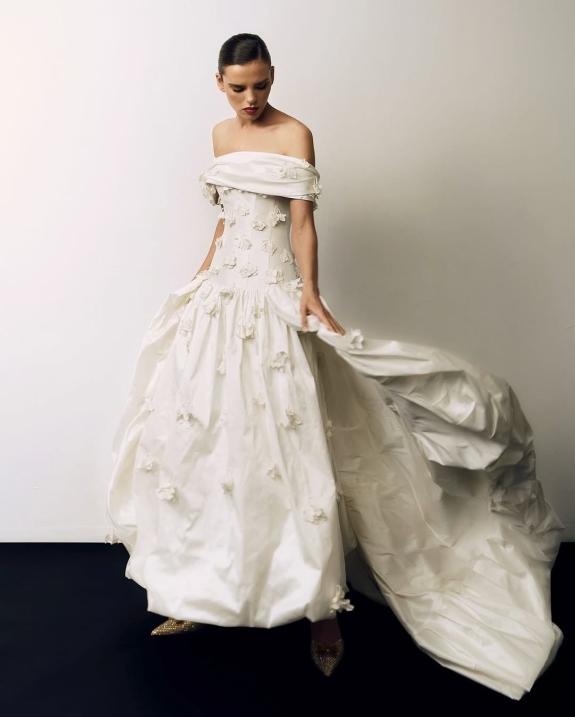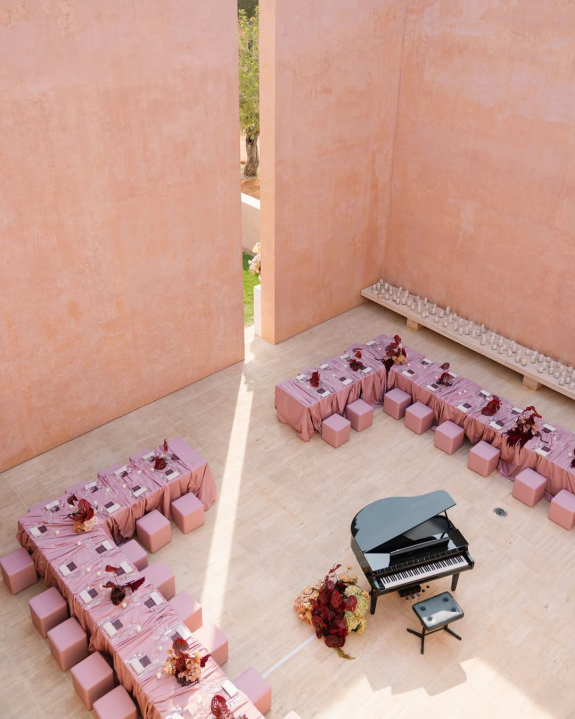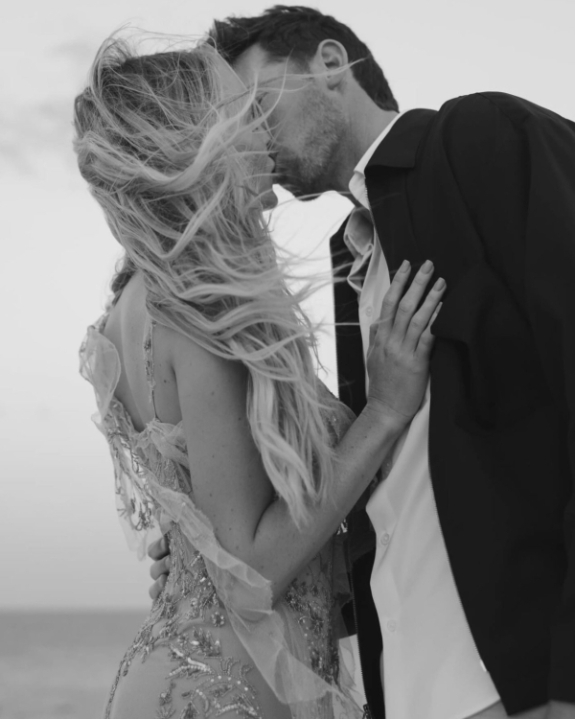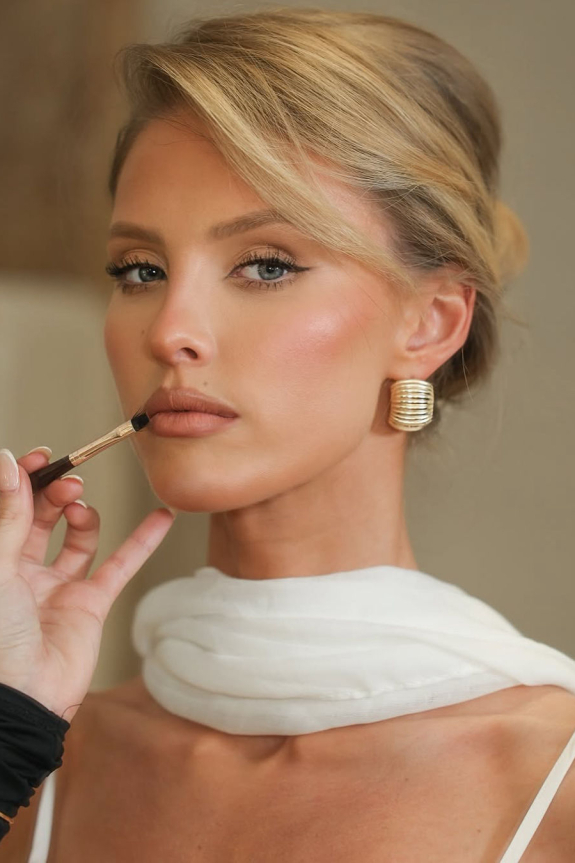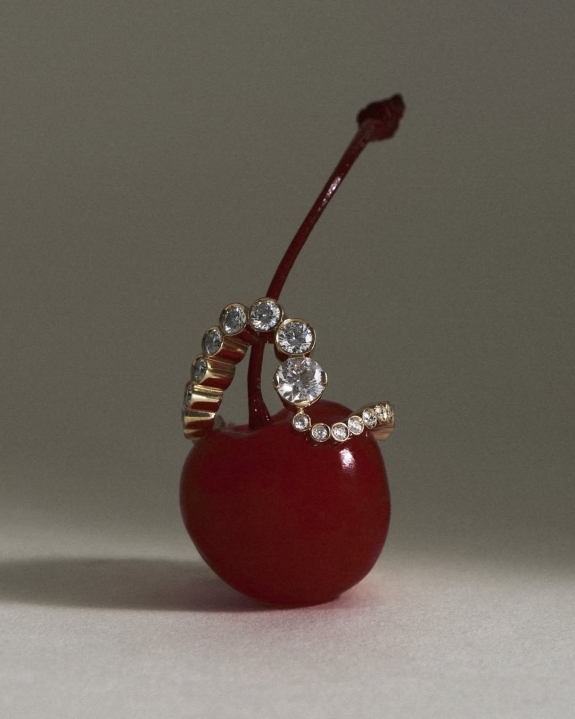Joy Zamora, Días de Vino Y Rosas
Between signature cocktails and Champagne toasts (maybe even a late night espresso martini), the bar can be a major part of the wedding experience. But knowing how much to actually buy? That’s where it gets tricky. No one wants to be hauling leftover rosé home, but running dry before the dance floor fills? Nightmare. Whether you're hosting 50 or 250 guests, here's how to calculate how much alcohol you'll actually need, stock your wedding bar wisely, and factor in all the details—so you’re not left with empty glasses or overflowing leftovers.
Disco Cubes, Albert Villegas Office
Start With a Headcount
Before anything else, look at your guest list and get a sense of how many people will actually be drinking. As a general rule, about 75% of guests will have alcohol, but that number can easily go up if it’s an adults-only wedding or if your crowd leans more...festive. If you're inviting a mix of ages or planning a daytime celebration, it might be a little lower. Getting a realistic about the numbers and crowd demographic is the first step to making sure your bar is stocked smartly—not wastefully.
Season, Setting, & Style
Matter More Than You Think
Summer wedding? People will gravitate toward chilled white wine, spritzes, and light beer. Winter celebration? Think red wine, whiskey, and cozy cocktails. For a beach or destination event, lean into lighter, hydrating options. The time of day plays a role too—guests drink differently at a daytime garden wedding than they do at a black-tie evening affair. Let the vibe of your day help guide what to serve.
Choose the Right Bar Format
Before you even start stocking up, think about how you’re serving drinks. An open bar keeps things simple—and guests happy—but it’s not your only option. A limited bar with just beer, wine, and a couple of signature cocktails can still feel elevated without sending your budget off the rails. Hosting a daytime brunch or an intimate gathering? A Champagne bar or spritz station might be all you need. Whatever you go with, let your crowd, timeline, and vibe guide the setup.
How to Estimate Without Overthinking It
If you want a baseline number, here it is: plan for roughly one drink per person, per hour of the reception. So if you’re having 100 guests and your party’s running five hours, you’re looking at around 500 drinks total. From there, it’s all about how you divide it up based on what you're offering and what your guests actually drink. No need to get too scientific—just think about your guest vibe. You know if it’s more espresso martinis and negronis or beer-and-burgers energy.
Here's The Break Down
Let’s say you're doing wine, beer, and a few signature cocktails. For 100 guests, here’s a solid place to start:
-
Wine: 30–40 bottles (go heavier on white in warmer months, red in colder ones)
-
Beer: 70–80 bottles or cans (mix in a crowd-pleasing lager and something with a little personality)
-
Spirits: 8–10 bottles total (vodka, tequila, gin, and whiskey usually cover your bases)
-
Champagne or sparkling wine: 15–18 bottles (if you’re pouring just for the toast), or 20–30 (if it’s served throughout the night)
Don’t Forget the Mixers, Garnishes,
& Non-Alc Options
If you’re serving cocktails, you’ll need to stock up on tonic, soda water, juice, limes, lemons, and whatever garnishes your signature drinks call for. And don’t forget your non-drinkers: mocktails, sparkling water, sodas, and something festive-looking always go a long way. It might not seem like much, but these extras are a crutial part of your bar setup—so it’s worth keeping them in mind when budgeting, especially for a more casual or DIY approach.
Ask Your Bartender or Caterer
This isn’t their first wedding. A good bartender or caterer can help you fine-tune quantities, especially if you’re doing passed drinks, going heavy on specialty cocktails, or planning a self-serve setup. They’ll know what works, what runs out fastest, and what guests tend to ignore. It’s also worth checking in with your planner or venue—some offer buy-back programs for unopened bottles or can help coordinate returns with your vendor. A little coordination here can go a long way for your budget (and your storage closet).
Order With Wiggle Room
Best rule of thumb? Order a little more than you think you’ll need. A 10–15% buffer gives you peace of mind—and ensures your cousin who turns into a margarita machine after one tequila doesn’t wipe out the entire bar before dinner. Leftovers can often be saved for the after-party, gifted to friends, or used to stock your newlywed bar cart—so the extra rarely goes to waste.

